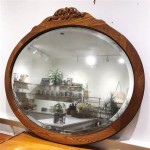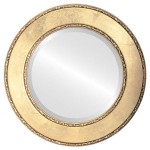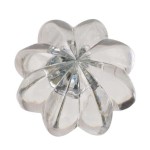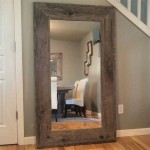Does a Convex Mirror Magnify?
Convex mirrors, characterized by their outwardly curved reflecting surface, offer a distinct perspective compared to their concave counterparts. This article explores the magnification properties of convex mirrors, delving into the underlying principles and practical implications of their image formation.
Key Points About Convex Mirrors
- Always produce virtual images.
- Images are located behind the mirror's surface.
- Images are always upright.
- Images are always smaller than the object.
- Offer a wider field of view than plane or concave mirrors.
A common misconception arises from the everyday use of the term "magnify." People generally associate magnification with an increase in size. However, in optics, magnification refers to the ratio of the image height to the object height. This ratio can be less than, equal to, or greater than one. A magnification less than one indicates a reduced image size, while a magnification greater than one indicates an enlarged image size. Convex mirrors always produce a magnification of less than one, meaning the image formed is always smaller than the object.
To understand why convex mirrors diminish image size, it's essential to consider the path of light rays. Parallel rays incident on a convex mirror diverge after reflection. These diverging rays appear to emanate from a point behind the mirror, creating a virtual image. Because the reflected rays diverge, they never converge to form a real image that can be projected onto a screen. The virtual image formed appears smaller and closer to the mirror than the actual object.
Understanding Virtual Images
- Formed by the apparent intersection of light rays.
- Cannot be projected onto a screen.
- Appear behind the mirror's surface.
The magnification factor (M) of a convex mirror can be calculated using the following formula: M = -i/o, where 'i' represents the image distance (distance from the mirror to the image) and 'o' represents the object distance (distance from the mirror to the object). Since the image formed by a convex mirror is always virtual, the image distance (i) is considered negative. The object distance (o) is always positive. Therefore, the magnification (M) will always be a positive value less than one, confirming the diminished image size.
The curvature of the mirror also plays a significant role in magnification. A more strongly curved mirror (smaller radius of curvature) will produce a smaller image and a wider field of view. Conversely, a less curved mirror (larger radius of curvature) will produce a larger image and a narrower field of view, although the image will still be smaller than the object. This relationship between curvature and field of view is a key reason for the widespread use of convex mirrors in various applications.
Applications of Convex Mirrors
- Passenger-side car mirrors ("objects in mirror are closer than they appear").
- Security mirrors in shops and stores.
- Blind spot mirrors for vehicles.
- Street corner mirrors to improve visibility.
The phrase "objects in mirror are closer than they appear" on passenger-side car mirrors reflects the diminished image size created by the convex mirror. While the image of a vehicle approaching from behind appears smaller, it is actually closer than its perceived size suggests. This warning reminds drivers to accurately judge distances when relying on the convex mirror's wider field of view.
In security applications, convex mirrors offer a panoramic view of a larger area than a plane mirror of the same size. This allows security personnel to monitor a wider space, enhancing surveillance capabilities. Similarly, the use of convex mirrors at blind corners or intersections improves visibility and road safety by providing drivers with a view of otherwise obscured areas.
The properties of convex mirrors, particularly their ability to produce a smaller, upright, and virtual image of a wider area, make them invaluable tools in numerous applications. Understanding the magnification principles of convex mirrors is crucial for interpreting the images they produce accurately and utilizing their advantages effectively.
While convex mirrors do technically magnify, the magnification factor is always less than one, resulting in a smaller image compared to the object. The term "magnify" in the context of convex mirrors refers to the optical principle of image formation, rather than the colloquial understanding of increasing size. The practical value of convex mirrors lies in their ability to provide a wider field of view, even at the expense of image size reduction.
Can A Convex Mirror Form Magnified Image Quora
Can A Convex Mirror Form Magnified Image Quora

Can A Convex Mirror Form Magnified Image Quora

Convex Lens Use Magnifying Glass
How Do Reflections From Convex Mirrors Make Objects Appear Smaller Quora

Mirror Magnification 101 Baci

Concave Mirrors And Convex Ray Diagrams Image Formation Examples

The Magnification Produced By A Concave Mirror Is Always Than Oneis Equal To Onemay Be Or Greater One

Concave Mirrors And Convex Ray Diagrams Image Formation Examples

Concave Mirrors And Convex Ray Diagrams Image Formation Examples








